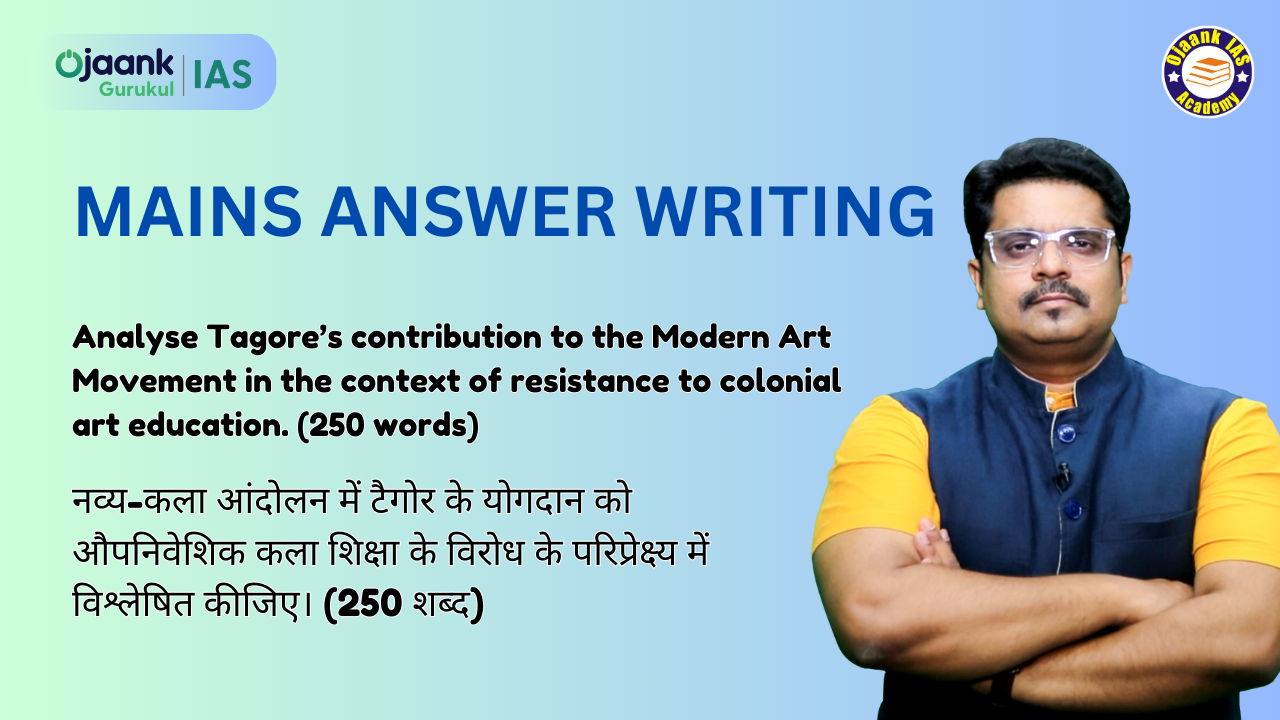Analyse Tagore’s contribution to the Modern Art Movement in the context of resistance to colonial art education. (250 words)
07-05-2025

I. State of Colonial Art Education:
Under British rule, art education was based on academic realism — that is, the exact imitation of nature and the human figure.
This style was incompatible with Indian cultural consciousness and imagination.
II. Tagore’s Opposition and Perspective:
Tagore described the colonial art system as “soulless.”
He argued that art should be a medium of self-exploration and dialogue with society.
Instead of imitating Western styles, he emphasized Indian tradition, symbolism, and emotional depth.
III. Establishment and Impact of Kala Bhavan:
He established Kala Bhavan at Santiniketan, which became a platform for modern artists like Nandalal Bose and Benode Behari Mukherjee.
Students were encouraged to engage in experimentation, symbolism, and connect with nature.
IV. New Direction and Message of Freedom:
Tagore’s modern art movement symbolized cultural independence and the rejection of colonial mentality in art.
It laid the foundation for the Indian modern art movement.
V. Conclusion:
Tagore not only challenged the structure of colonial art education but also initiated an artistic tradition that nurtured both creative freedom and Indian cultural consciousness.
-1745846799599.jpeg)
Copyright 2022 power by Ojaank Ias
|




